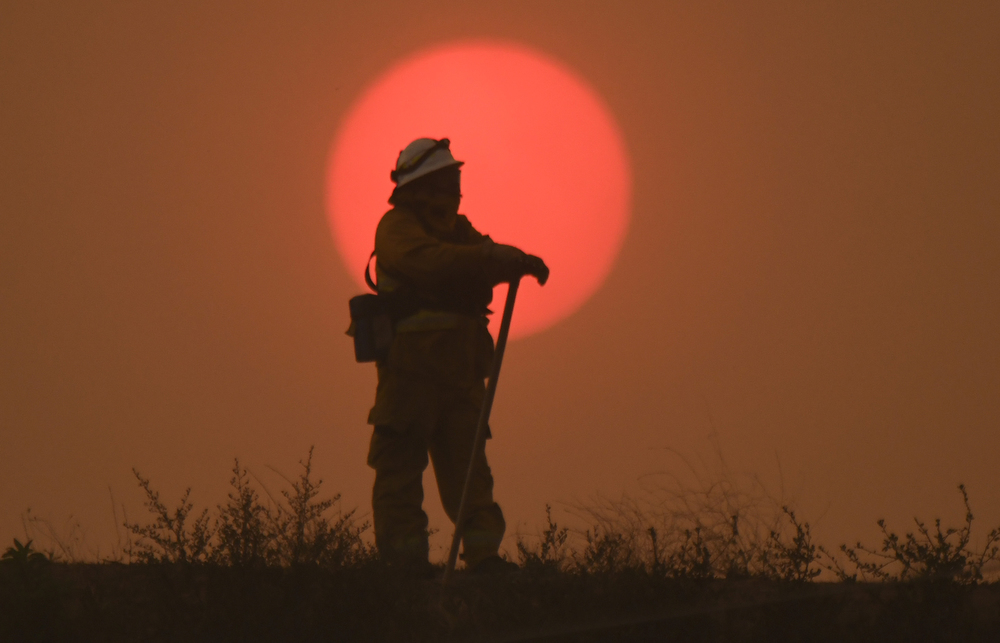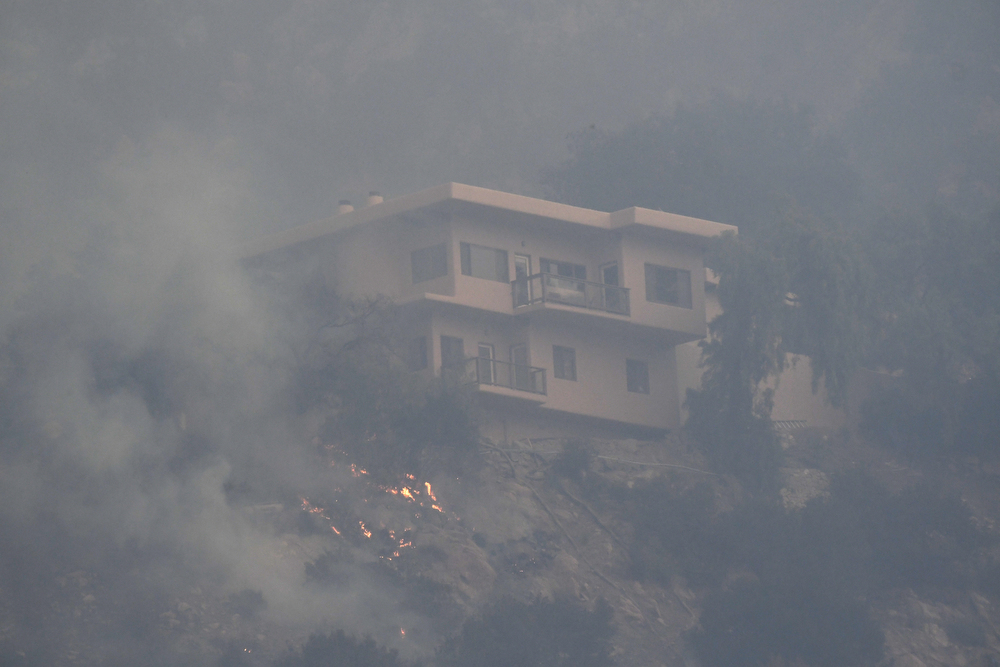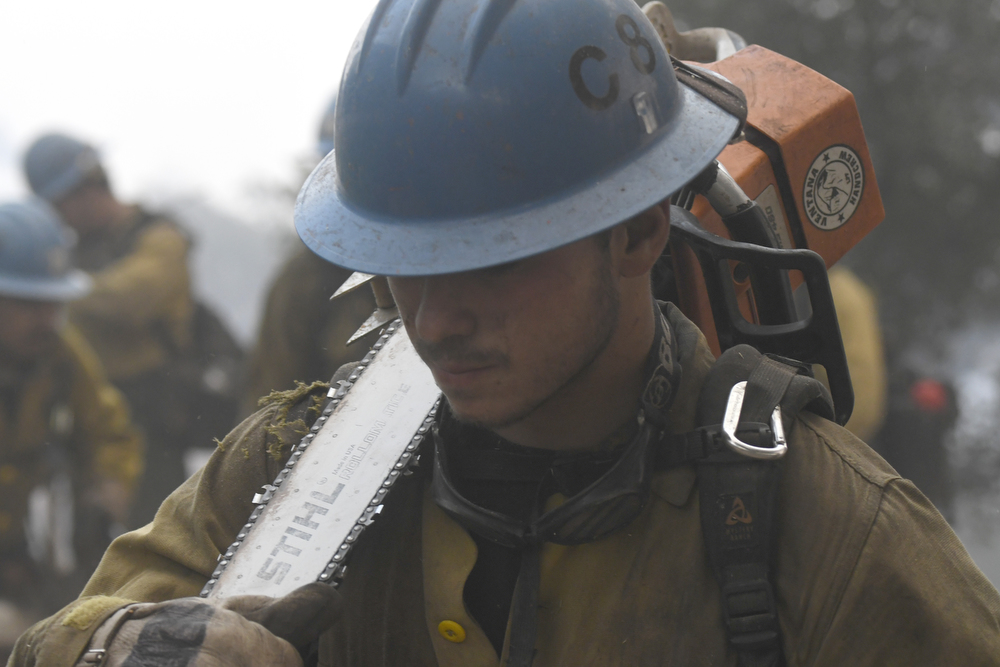Santa Barbara Dodges the Massive Thomas Fire Bullet … For Now
Hundreds Were Threatened, but Only 14 Homes Lost or Damaged in Saturday Firefight

There was a palpable giddiness radiating from the firefighting brass who assembled in San Marcos High School auditorium Sunday evening, born of exhaustion, relief, adrenaline, and success. They’d managed to survive with astonishing little damage the hairiest, scariest daylong showdown with the Thomas Fire since it crossed the county lines a week ago. Said one of the commanders after addressing the crowd, “I had a hard time not dancing up on that stage tonight.”
According to Cal Fire’s Geoff Pemberton, 1,300 structures were immediately threatened by the Thomas Fire on Saturday. Only 24 structures were damaged or destroyed during the firefight. Of those, only 14 were residences. To put these numbers in context, 210 homes were lost in the Tea Fire and 640 in the Painted Cave Fire. Not a single reportable injury was claimed by any of the firefighters holding the line in the front country separating Montecito and Santa Barbara from the steep, rocky, densely vegetated terrain sprawling behind it.

“Oh boy, that fire really wanted to come running down the hill,” exclaimed Santa Barbara County Battalion Chief Chris Childers. “And it did.” Waiting for the fire were hundreds of fire engine crews from hundreds of firefighting agencies throughout the state and country. They’d been marshaling their forces there the past week, creating and expanding the defensible spaces around threatened homes along East Mountain Drive, coiling their hoses in anticipation of the fire — fueled by 65 mph gusts — rushing down the hill. “We had a great day yesterday, didn’t we?” asked Childers. Then, answering his own question, he added, “It was a very good day.”
On Saturday, 11,189 acres went up in smoke, bringing the total size of the Thomas Fire — now officially the third largest wildfire since California began keeping such statistics in 1932 — to 269,000 acres. That’s more in one day than last year’s Sherpa Fire. The Thomas is 40 percent contained. That phrase means the fire has been hosed down, cooled, and a line cut — with chain saws and axes — around its perimeter such that firefighters are confident it won’t spring back to life.

On Sunday, the winds were considerably quieter and the crews focused on keeping the Thomas Fire from heading west across Gibraltar Road or north above Camino Cielo. With the aerial bombardment provided by 34 helicopters and two super-scooper aircraft that skimmed 1,600 gallons of water out of Lake Cachuma per run, these lines were held. Retardant drops were taking place every five to ten minutes.
While no big flames were visible along the ridgelines Sunday, there was plenty of smoldering. “There are still smokes all over the place,” Childers stated. “We’ll be chasing smokes all over the place the next couple days.”
Weather forecasts are calling for mild winds of five to ten miles an hour, both onshore and off, for the next two days. On Wednesday, however, the incident commanders are bracing for another significant wind event, with northerly winds gusting at 40-50 miles an hour and pushing the fire back down the mountain.
The primary strategy, according to commander Childers, is to keep the fire contained to the east of Gibraltar Road. Should that fail, the fallback would be Highway 154. There’s a ridge there known as Windy Gap that’s long provided a well-established fuel break.
In the meantime, 17,000 residents remain under mandatory evacuation orders and another 30,000 are under evacuation warnings.


